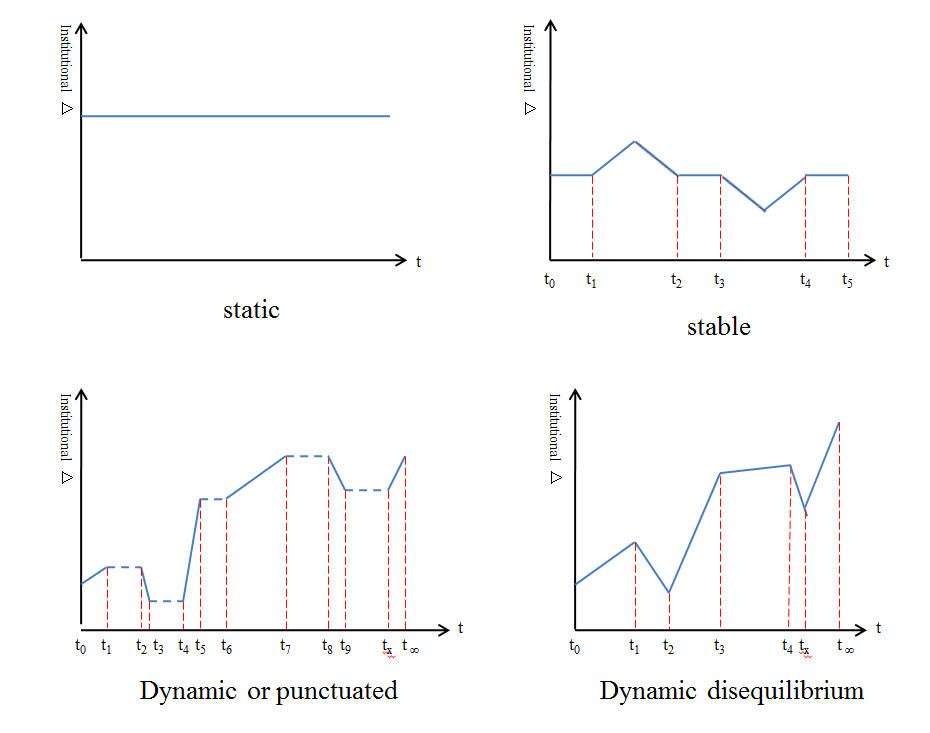The theorem on “Dynamic Disequilibrium” is defined along two dimensions (depicted in Fig. 1):
- Dynamism, or the premise that institutions are in perpetual flux, moving onward from one state to the other. That change, however, can manifest itself at different speeds – sometimes infinitesimally, imperceptibly small (resembling a nearly horizontal line, e.g. t3–t4); sometimes with great velocity, strides and shocks (depicted as a steep curve, e.g. t2–t3);
- Non-equilibrium, i.e. the premise that institutional change never reaches a state of balance between actors’ interests, power and resources, as tension and conflict is present in any institutional arrangement.
See P. Ho, “A Theorem on Dynamic Disequilibrium: Debunking Path Dependence and Equilibrium via China’s Urban Property (1949-1998)”, Land Use Policy, 2017, , in press, p. 4
